Courtenay Schurman, MS, CSCS, coauthor of The Outdoor Athlete and cofounder of Body Results in Seattle, designed the following workout as a full-body routine hitting every major muscle group in the body, and challenging coordination, balance, cardiovascular fitness, and strength.
She recommends doing these exercises twice a week for at least three to four weeks to prepare for a hike.
Don’t be fooled into thinking this workout benefits only the outdoorsy type: The combination of accessible, progressive strength-and-conditioning moves can help you build muscle and burn fat regardless of your interests.
The Workout
Perform these movements as a circuit-style workout: Complete one set of each exercise before moving on to the next. When you get to the end, repeat from the top for up to three rounds. Aim to maintain good form, and rest as necessary between exercises.
Step-Ups
Prepares your calves, glutes, and hamstrings for the uphill portion of a hike.
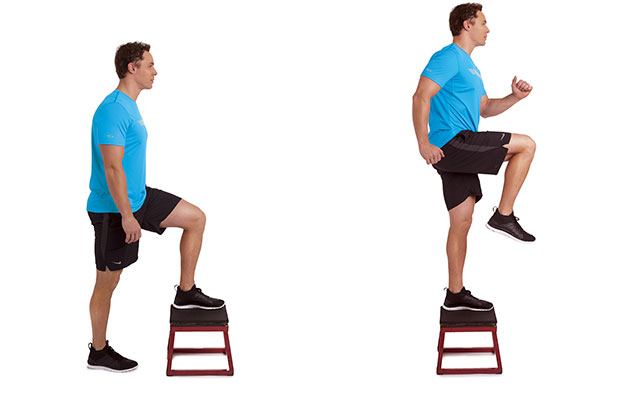
- Facing a box or step that’s about 6 to 15 inches high, lift your left foot off the ground and step on the box.
- Exhale and engage your core. Then drive through your left heel to stand up on the box, drawing your right knee up to hip height. Inhale.
- Exhale as you slowly reverse the movement, returning your right foot to the floor on a count of two.
- Repeat 12 times on the left, then switch sides.
Make it easier: Use a shorter step.
Make it harder: Hold a dumbbell in each hand or wear a pack on your back.
Rotational Planks
Strengthens the muscles of your core, chest, and shoulders for carrying heavy loads and maneuvering over uneven terrain.
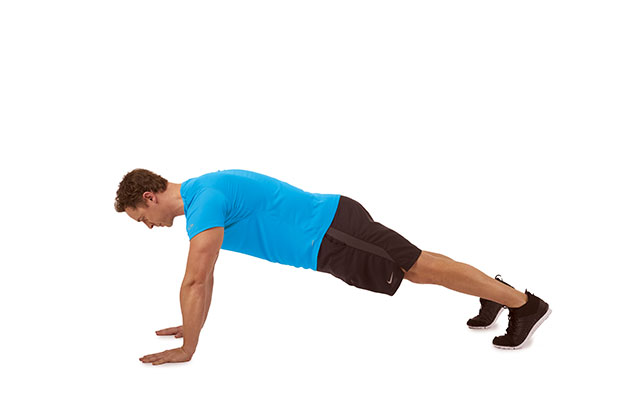
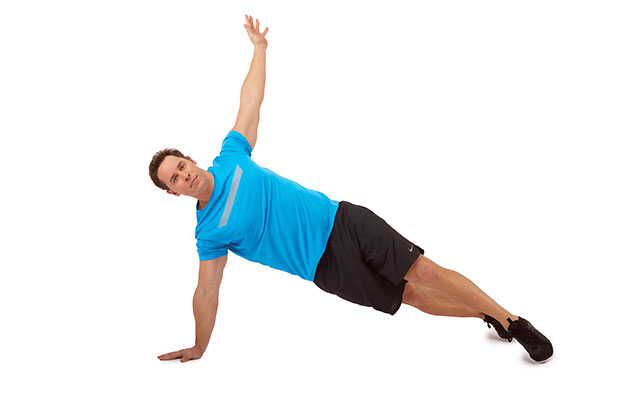
- Start in a plank position on your hands, with wrists under your shoulders and feet slightly wider than your hips.
- On an exhale, lift your left hand off the ground and slowly rotate your body until your left arm is pointing toward the ceiling. Keep your right arm straight but not locked.
- Inhale as you slowly reverse the movement to return to the starting position.
- Repeat on the right side. Continue alternating sides for a total of 6 reps on each side.
Make it easier: Start in a plank with feet wide. Alternate lifting one hand at a time, tapping your opposite-side shoulder. Avoid rotating at your pelvis.
Make it harder: Perform a pushup between sides.
Reverse Step-Ups
Eccentrically works the quads, preparing you for the downhill portion of a hike.

- Stand in front of a box or step (about 4 to 10 inches high), facing away from the step. Transfer your weight to your right foot and place the toes of your left foot on the step behind you, with toes turned out slightly.
- Shift your weight to your left foot, exhale, then press through the ball of your foot to rise slowly to a standing position on the step. Draw your right knee up.
- Once your left leg is straight, lower your left heel to the step. Inhale.
- Slowly reverse the movement: Exhale, then lower your right foot to the ground on a count of two. Keep your shoulders and hips squared as you step down.
- Repeat 12 times on the left, then switch sides.
Make it easier: Use a shorter step.
Make it harder: Hold a dumbbell in each hand or wear a pack on your back.
Snow Shoveler
Integrates all the muscles of your lower body and core (quadriceps, hamstrings, glutes, lower back muscles, abs) with your upper body, and replicates lifting and hoisting a pack on your back.
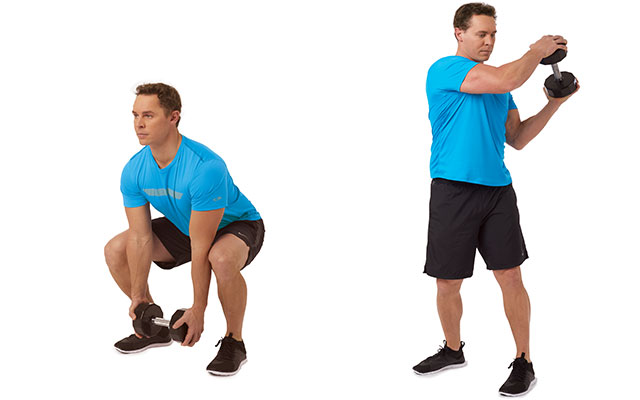
- Straddle a sizable dumbbell, kettlebell, or medicine ball.
- On an inhale, bend your knees and push your hips backward to squat down and grab hold of the weight with both hands. Keep your chest lifted and your gaze straight ahead.
- Exhale and engage your core, then pick up the weight and lift it toward your left shoulder as you rotate through your waist and mid-back, keeping your torso vertical.
- Inhale as you reverse the movement, squatting to lower the weight toward the ground.
- Repeat, this time rotating toward your right shoulder.
- Continue alternating sides for a total of 12 repetitions on each side.
Make it easier: Use a lighter weight.
Make it harder: Use a heavier weight.
Calf Raises
Prepares calves and ankles for the ascending part of a hike and for the extra load of a pack.
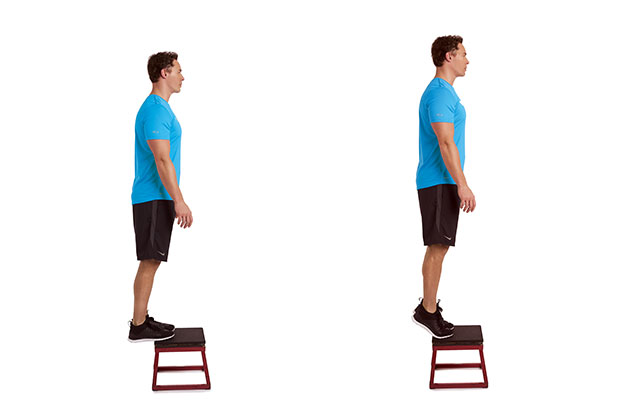
- Stand on the balls of your feet on a low step.
- On a count of two, rise up onto your tiptoes, going as high as possible.
- Count to two as you lower your heels to the starting position.
- Repeat 12 times.
Make it easier: Hold on to something for support.
Make it harder: Hold a dumbbell or perform the movement unilaterally, doing raises with one foot at a time.
Single-Arm Bent-Over Rows
Helps with lifting your pack onto your back, and trains the upper postural muscles for carrying a weighted backpack for long periods of time.
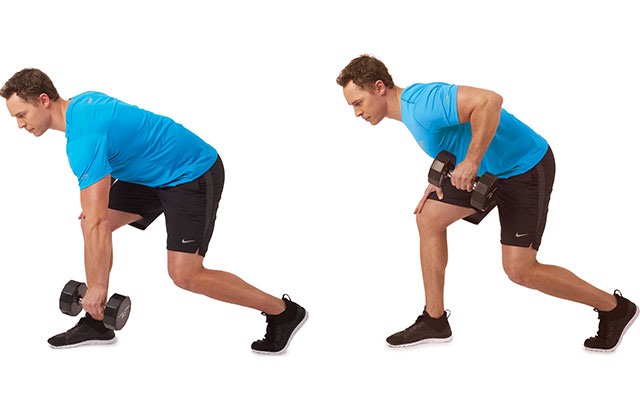
- Stand with a staggered stance, holding a dumbbell in the hand opposite the forward foot, arm extended. Rest the opposite hand on your thigh for support. Engage your core and keep your back flat.
- Exhale as you pull the dumbbell toward your body, squeezing your shoulder blade toward the middle of your back.
- Inhale as you slowly lower the dumbbell to the starting position.
- Repeat 12 times. Switch sides.
Make it easier: Use a bench to support your weight.
Make it harder: Use a heavier dumbbell.
Bonus Exercises
Plié Squat With Upright Row
Works the trapezius muscles in your upper back to build endurance for carrying a pack. Also works your lower body, particularly the adductors or inner thighs.
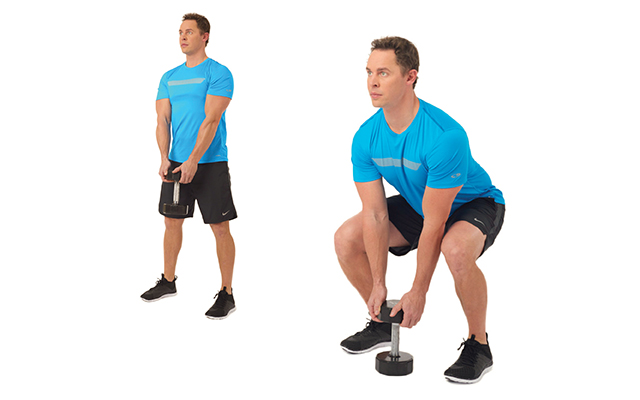
- Stand with your feet wider than your hips and toes turned out. Hold a dumbbell in each hand, with palms facing toward your body.
- Inhale as you lower into a squat, keeping your hips pushed back, chest forward, and heels on the ground.
- Exhale and drive through your heels to rise to standing. At the same time, lift your elbows to bring the dumbbells toward your shoulders, keeping the weights as close to your body as possible. Your elbows should be higher than your forearms at the top position.
- Slowly lower the dumbbells down to the starting position as you drop back down into a squat.
- Repeat 12 times.
Make it easier: Perform the upright row without the plié squat or lighten the weight.
Make it harder: Rise up onto your toes at the top of the movement or increase the weight.
Single-Leg Deadlifts
Builds strong glutes to tackle climbs and prepares ankles, glutes, and core for balance challenges.
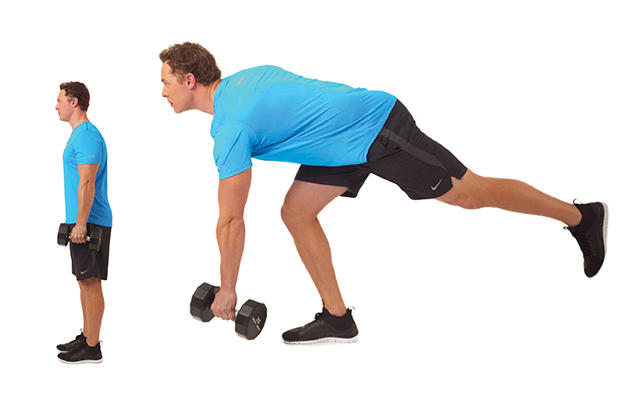
- Stand on your right foot and hold a dumbbell in your right hand.
- As you inhale, simultaneously hinge at your hips and bend your right knee to lower the dumbbell toward the ground. Avoid rounding your back.
- Exhale and drive through your right heel to rise to standing.
- Repeat 6 times. Then switch the dumbbell to your left hand for 6 more reps.
- Switch legs and perform 6 additional reps with the dumbbell on each side.
Make it easier: Place your nonworking foot on a low step behind you or keep the toes of your nonworking foot on the ground, like a kickstand.
Make it harder: Use a heavier dumbbell.
Hiking Hot Spots
Novice hikers often are surprised at how sore they feel after their first trek, especially if they were wearing a pack, says Courtenay Schurman, MS, CSCS, coauthor of The Outdoor Athlete and cofounder of Body Results in Seattle. Common areas of tightness include the glutes, which are used to propel you upward; calves, which get a lot of action on steep trails; and upper back, which can get tight from wearing a pack. Schurman recommends performing the following stretches after a hike — and after this workout — to focus on these areas.
Seated Glute Stretch
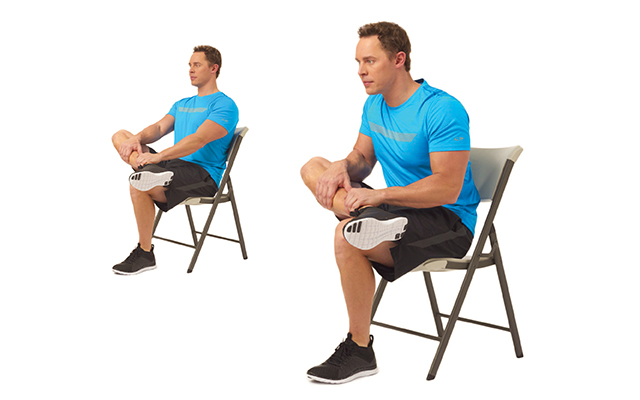
Sit on a stability ball or chair with your feet on the ground. Lift your right foot and place the outside of your right ankle just above your left knee. Gently press your right leg against your knee until you feel a stretch in your right hip. Fold your torso forward, keeping your back flat, to deepen the stretch. Hold for at least 30 seconds.
Hug a Tree
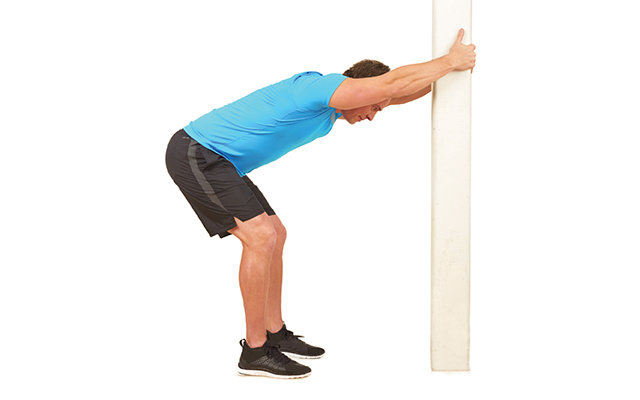
Place both hands around a vertical pole, standing about 18 inches away from it. Lean back until you feel a stretch across your lower back, upper back, and arms. Hold for at least 30 seconds.
Calf Stretch
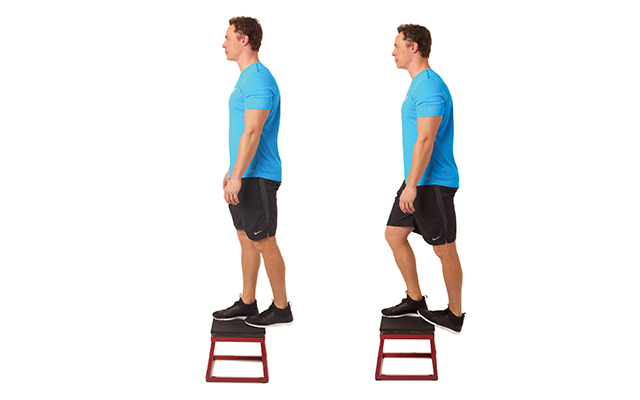
Stand on a low step or curb, on the balls of your feet. Lower your right heel toward the ground as far as possible and stay there for at least 30 seconds. Repeat on the left side.


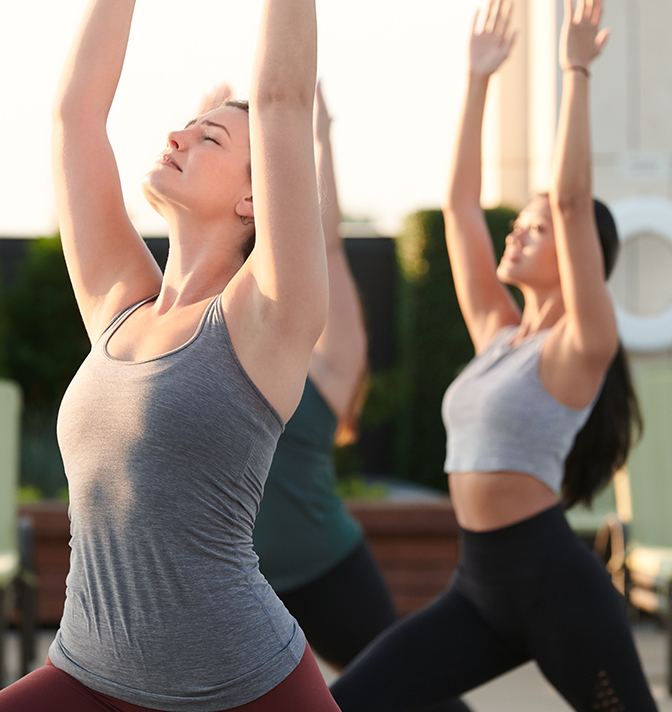
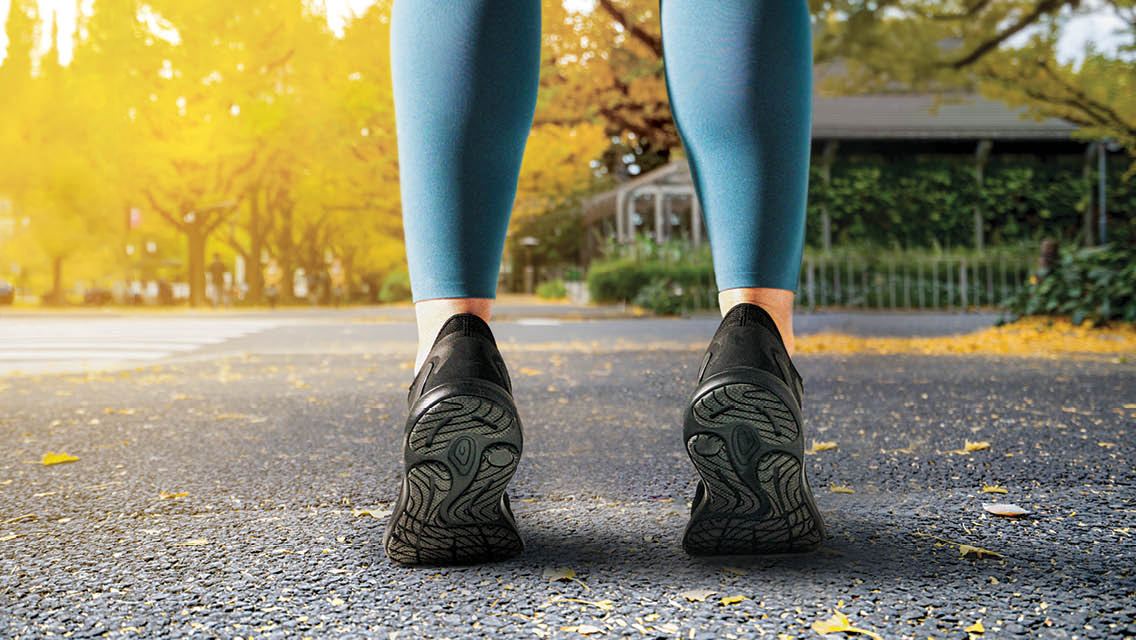

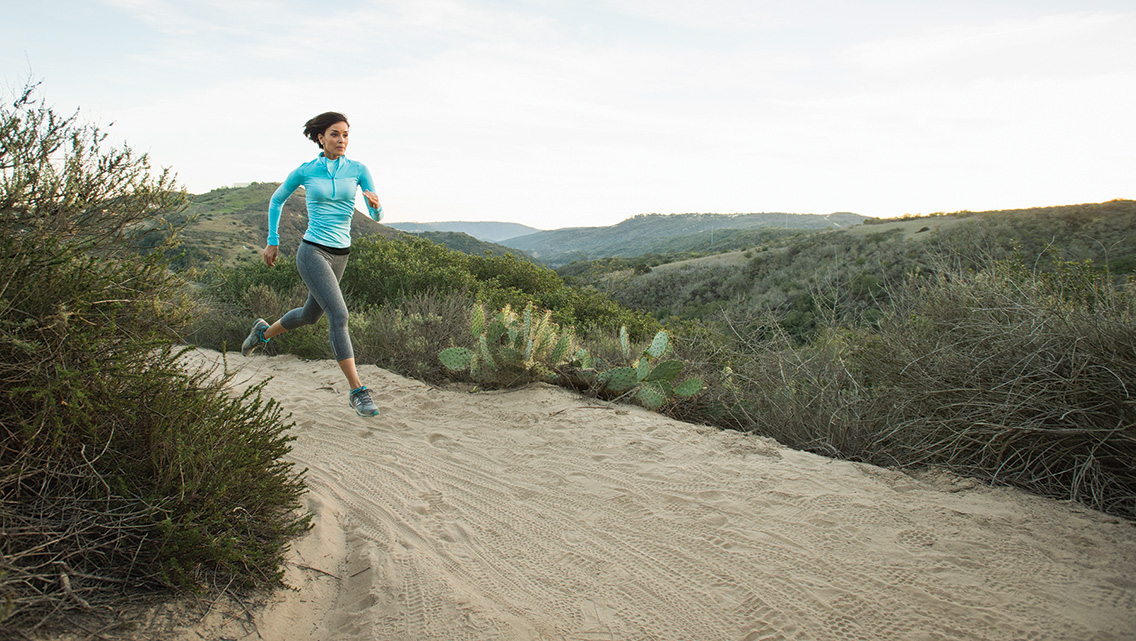
This Post Has One Comment
These exercises look absolutely wonderful! Thank you so much for putting this together for us. I intend to use the information in this article to help me train.